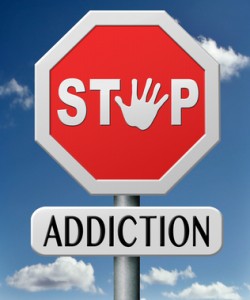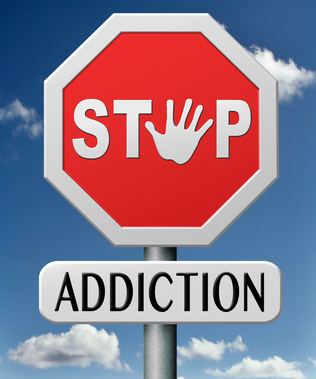
Maia Szalavitz wrote on Substance.com that she stopped shooting coke and heroin when she was 23. “I quit at around the age when, according to large epidemiological studies, most people who have diagnosable addiction problems do so —without treatment.” Although she personally got treatment help, her article was about people who stop without treatment or assistance from self-help, 12-Step programs. It was provocatively titled: “Most People with Addiction Simply Grow Out of It: Why Is This Widely Denied?” She’s currently finishing her sixth book, Unbroken Brain, “which examines why seeing addiction as a developmental or learning disorder can help us better understand, prevent and treat it.”
Szalavitz referenced an epidemiological study, which suggested that a significant proportion of individuals achieve remission from addiction at some point in their lifetime. This study by Lopez-Quintero et al. found that “half of the cases of nicotine, alcohol, cannabis and cocaine dependence remitted approximately 26, 14, 6 and 5 years after dependence onset, respectively.” An article by Gene H. Heyman reviewed four studies, including the Lopez-Quintero one, and suggested that: “most addicts were no longer using drugs at clinically significant (emphasis added) levels by the age of 30.” According to Heyman:
The idea that addiction is a disease characterized by compulsive (involuntary) drug use goes hand in hand with the belief that addicts require lifelong treatment and that treatment is necessary for recovery. However, the epidemiological results indicate that most addicts do not take advantage of treatment; nevertheless, most quit. The logical inference is that remission from drug dependence does not require treatment.
The implications of Heyman’s and Szalavitz’s interpretation of the research studies they cited has far reaching consequences, particularly for the addiction treatment industry. So I want to take a look at these epidemiological studies that led them to conclude that most addicts quit drug or alcohol use (or enter remission) on their own. Heyman’s review article looked at four national epidemiological surveys of the prevalence of psychiatric disorders. Szalavitz seems to cite references to these same four studies or other articles by Heyman. So my interaction will be with the discussion in Heyman’s article: “Quitting Drugs: Quantitative and Qualitative Features.”
Hyman presented data from four large national epidemiological studies that reported high remission rates of diagnosed substance-related disorders. The studies and their remission rates were as follows: 76% for NCS, the National Comorbidity Survey; 83% for the NCS-R, the National Comorbidity Survey Replication; and 81% for the NESARC, the National Epidemiological Survey on Alcohol and Related Studies. Another study, the Epidemiological Catchment Area (ECA) survey reported a lower remission rate of 57%, but had combined the criteria for substance abuse and substance dependence into one category. He concluded: “The results do not support the often heard claim that addiction is a chronic, relapsing disease.”
Now I also have problems with defining addiction in pure medical/disease model terms and would be happy to see a more socially and cognitively nuanced definition of addiction become mainstream. But those self-generated remission rates seemed awfully high. How was this remission quantified?
First, let’s look at a critique of epidemiological miscounts by Allen Frances. Frances was the chair appointed by the American Psychiatric Association for the fourth edition of the DSM, the Diagnostic and Statistical Manual of Mental Disorders used by the epidemiological researchers to quantify their definition of “remission.” He initially pointed to an article by Regier et al., “Limitations of Diagnostic Criteria and Assessment Instruments for Mental Disorders” published in the journal, Archives of General Psychiatry in 1998. The Regier et al. article abstract raised concerns with “significant differences in mental disorder rates from 2 large community surveys”—the ECA and the NCS, two of the studies cited and discussed by Heyman.
Frances also presented his critique of epidemiological studies that use DSM diagnoses in Saving Normal. There he pointed to the “inherent limitations” of defining clinical cases in epidemiological studies. They used lay interviewers who make “diagnoses” by symptom counts, with “no consideration of whether the symptoms are severe or enduring enough to warrant diagnosis or treatment.” As a consequence, the judgment of a clinician is missing. “This results in rates that are always greatly inflated.” Symptoms “that are mild, transient and lacking in clinical significance” are mistakenly diagnosed as symptoms of psychiatric disorder.
They should never be taken at face value as a true reflection of the real extent of illness in the community. Unfortunately, the exaggerated rates are always reported without proper caveat and are accepted as if they are an accurate reflection of the real prevalence of psychiatric disorder. (Saving Normal, p. 86)
Another problem with these studies was how they defined “remission.” Remission was simply not reporting the required number of symptoms to meet the diagnosis over the previous year. Remission had a broader meaning than just “quitting” or abstinence.
The diagnostic criteria for substance abuse and dependence found in the DSM-IV were used by all the studies reported in Heyman. The ECA study, as noted above, included individuals who were “substance abusers” and “substance dependent.” The other studies only looked at those who were “substance dependent.” Remission for the ECA study was defined as no reported symptoms, while in the others, it was defined as two or less. This was based upon the separate criteria needed for each diagnosis—only one from the list for substance abuse, but three for substance dependence.
In Mad Science, Kirk, Gomory and Cohen noted how the DSM’s diagnostic criteria are the de facto definitions of mental disorder in the U.S. However, they said that describing a set of behaviors and labeling them as symptoms or diagnostic criteria does not establish the presence or absence of an illness or disorder.
Descriptive diagnosis is a tautology that distracts observers from recognizing that DSM offers no indicators that establish the validity of any psychiatric illness, although they may typically point to distresses, worries or misbehaviors (Mad Science, p. 166).
So the importance of clinical judgment, pointed to by Frances, in making a diagnosis of the existence or remission of substance dependence or substance abuse is essential. Following the critique of Frances and Regier et al. and their concerns with inconsistencies and limitations of using diagnostic criteria in epidemiological studies, the reported incidence rates of both substance dependence AND remission are likely to be greatly inflated in the studies reviewed by Heyman.
The conclusion that large populations of individuals with diagnosable addiction problems (substance dependence, according to Heyman) can stop or remit without help in such high percentages is suspect. In addition, the “diagnosis” of individuals as substance dependent in these studies is probably inaccurate for many of them. It is likely that many of those labeled as substance dependent in the studies were only substance abusers. According to Carlton Erickson in The Science of Addiction, substance abusers are more likely to make changes in their substance use because of “significant impairment or distress in their life as a consequence of their use.” They may quit on their own, without treatment. They may even go back to moderate or controlled drinking or mature out of the habit.





